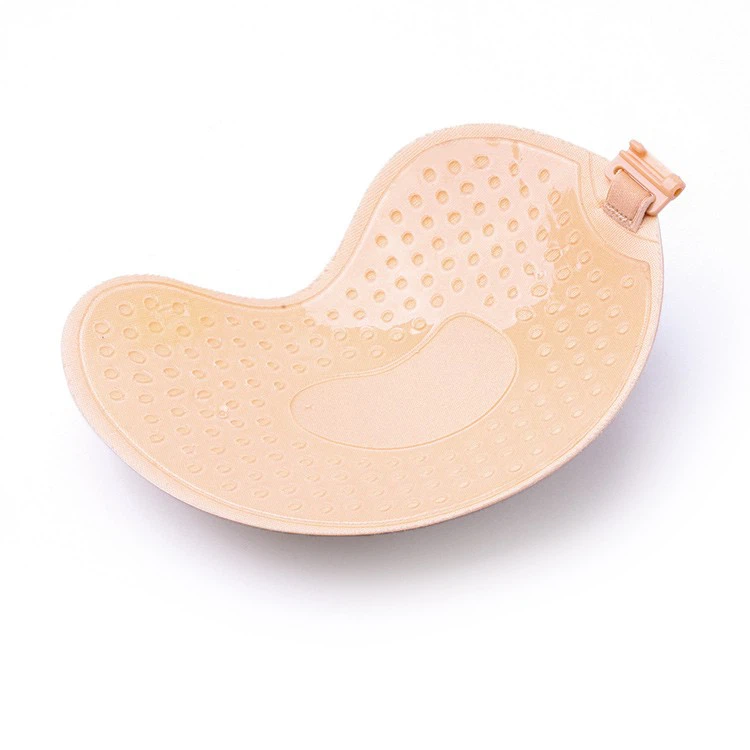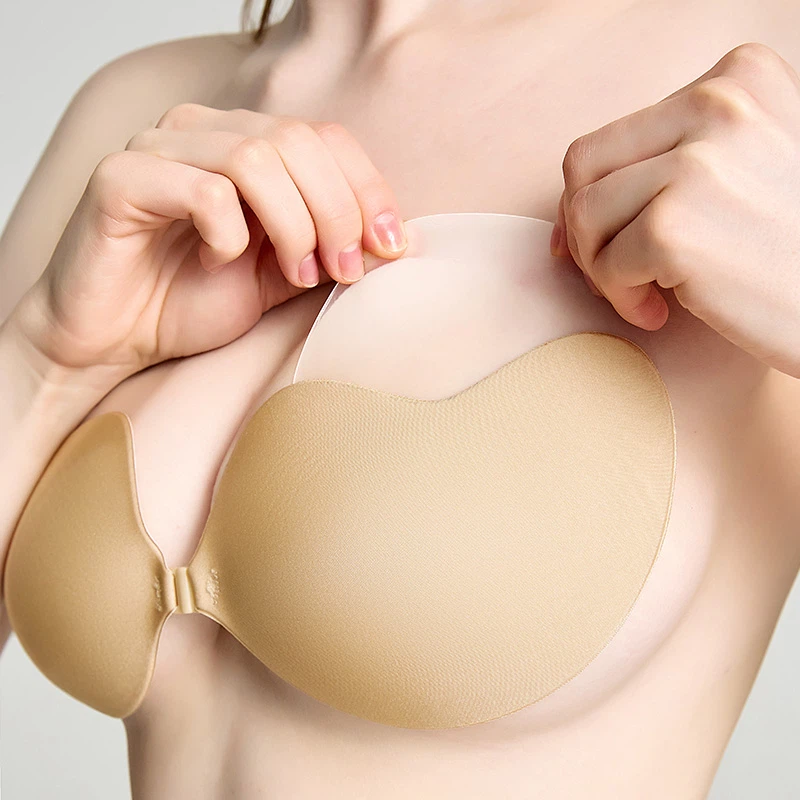Recommendations for Choosing Between Disposable and Reusable Silicone Bra Tapes
I. Global Silicone Bra Tape Market: Demand Divergence and Business Opportunities for the Two Product Categories
By 2024, the global bra tape market will have reached over $100 million in sales, and the reusable bra tape market is projected to reach $1.205 billion by 2031, growing at a compound annual growth rate of 4.9%. This growth is driven by the clear market positioning of disposable and reusable products: disposable bra tapes dominate the fast-moving consumer goods market due to their disposable nature, while reusable products continue to penetrate the consumer goods market driven by environmental trends and cost-effectiveness. For wholesale buyers, a product portfolio that precisely matches target market demand will directly determine repurchase rates and profit margins.
II. In-depth Comparison of Core Dimensions: Disposable vs. Reusable Chest Tapes
(I) Cost Structure and Profit Model
Dimensions
Disposable Silicone Chest Tapes
Reusable Silicone Chest Tapes
Purchase Cost Per Customer
$0.5-3/pair (depending on material grade)
$5-15/pair
Single-Use Cost
Equivalent Purchase Cost (Non-Reusable)
$0.1-0.3/use (based on a 50-use lifespan)
Inventory Turnover Efficiency
Fast (shelf life 1-2 years, frequent replenishment required)
Medium (shelf life 3+ years, long replenishment cycle)
Terminal Pricing Range
Low-price attraction (retail price $3-10)
Mid-to-high-end premium (retail price $20-50) USD)
(II) Compliance Certification and Market Access
Both product types must meet basic safety standards for skin contact products, but reusable products have stricter certification requirements due to their higher material durability requirements:
Basic Requirements: Globally standardized, they must comply with GB 18401-2010 Textile Product Safety Standards. Glues must avoid hazardous substances such as formaldehyde and heavy metals.
Advanced Certification: Reusable products are recommended to obtain EU CE certification (medical-grade silicone standards) and US FDA certification, especially for the European and American markets. Disposable products intended for medical use must comply with YY/T 0148 medical dressing standards.
Risk Warning: Low-priced disposable products are prone to allergy complaints due to residual industrial glue. A 2025 evaluation showed that only 30% of popular products had complete safety certifications. (III) Scenario Adaptation and Regional Preferences
Core Scenarios for Disposable Bra Tapes:
Medical Care: Scenarios requiring sterile protection, such as postoperative rehabilitation and elderly care, account for over 60% of the Chinese market.
Emergency Consumption: Immediate purchases for tourist attractions and wedding studios, with single purchases in Southeast Asia reaching up to 100,000 pairs per order.
Fast Fashion Channels: Low-priced, lead-in products for convenience stores and discount supermarkets, suitable for cost-sensitive markets such as the Middle East and Africa.
Core Scenarios for Reusable Bra Tapes:
Beauty Retail: Featured in high-end channels like Sephora, requiring 3D shaping and waterproof/sweatproof features.
Wedding Photography: 8mm thickened versions can create a 1.5-cup increase in size, accounting for over 40% of purchases in European and American wedding photography markets.
Environmentally Friendly Markets: Regions like Northern Europe and Canada, where reusable bra tapes with recyclable packaging command a 30% premium.
III. Procurement Decision Guide: Targeted Layout by Market and Channel
(I) Customized Product Portfolio by Regional Market
European and American Markets: Primarily focus on reusable products (70%), prioritizing medical-grade silicone with “hypoallergenic” certification and environmentally friendly pulp packaging. Disposable products are supplementary, primarily for medical emergencies.
Southeast Asian Markets: A 6:4 ratio of disposable to reusable products is used, with disposable products kept to a cost per customer below $1. Reusable products prioritize waterproofing (suitable for tropical climates).
Japanese and Korean Markets: 100% reusable product portfolio, with a focus on developing ultra-thin (<3mm thick) and fabric-clad models to meet breathability requirements for daily commuting.
(II) Optimized Product Selection by Sales Channel
E-commerce Platforms: Prioritize reusable products, highlighting value-added selling points such as “50-use lifespan” and “dedicated cleaning solution kit,” along with product test videos (e.g., a 40°C heat resistance demonstration). Offline photo studios/beauty salons: Customized disposable (logo-printed) + reusable combination packages, with trial kits (10 pairs/set) available.
Medical channels: Disposable products must be sterile certified, reusable products must be labeled “For Postoperative Recovery Only,” and a hospital clinical test report must be provided.
(III) Cost Control and Risk Mitigation
Bulk Purchasing: Reusable products can reduce silicone raw material costs by 12% with a single purchase of over 50,000 pairs. For disposable products, it is recommended to jointly purchase with a non-woven fabric supplier to reduce packaging costs.
Quality Control: Each batch is randomly inspected for glue peel strength (must be at least 1.5N/cm). Reusable products must pass a 200-cycle bend test to ensure no cracking.
After-Sales Guarantee: Reusable products are covered by a 3-month quality warranty (reissued if adhesion decreases), and disposable products offer sterility claims.
IV. 2025 Product Enhancement Strategy
Material Upgrade: Reusable models use bio-based silicone (reducing carbon emissions by 30%), while disposable models use water-soluble glue (easily biodegradable).
Functional Innovation: Bridal models feature temperature-sensitive adhesive technology (strengthening adhesion at elevated body temperature), while medical models feature an antibacterial coating (inhibiting Staphylococcus aureus).
Packaging Optimization: Reusable models come with a portable storage case, while disposable models use individually sealed packaging (extending shelf life to 2 years).
Post time: Oct-22-2025

